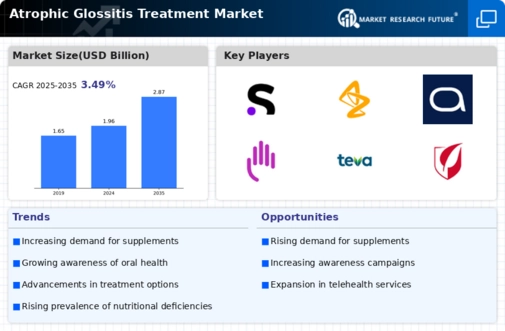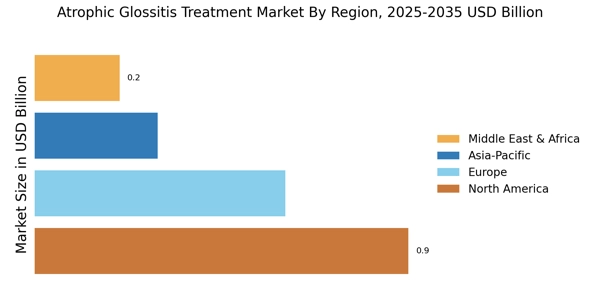Growing Awareness of Oral Health
There seems to be a growing awareness regarding the importance of oral health, which is likely to influence the Atrophic Glossitis Treatment Market positively. Educational campaigns and public health initiatives are increasingly emphasizing the connection between oral health and overall well-being. As individuals become more informed about conditions like atrophic glossitis, they may seek treatment options more proactively. This heightened awareness could lead to an increase in consultations with healthcare professionals, thereby driving demand for various treatment modalities within the Atrophic Glossitis Treatment Market.
Integration of Telehealth Services
The integration of telehealth services into healthcare delivery models seems to be transforming the Atrophic Glossitis Treatment Market. Telehealth offers patients greater access to healthcare professionals, particularly in remote or underserved areas. This increased accessibility may encourage individuals experiencing symptoms of atrophic glossitis to seek timely consultations and treatment options. As telehealth continues to gain traction, it could facilitate more efficient management of atrophic glossitis, ultimately expanding the market for treatment solutions. The convenience and flexibility offered by telehealth may lead to a broader patient base engaging with the Atrophic Glossitis Treatment Market.
Advancements in Treatment Modalities
Recent advancements in treatment modalities for atrophic glossitis are likely to play a crucial role in shaping the Atrophic Glossitis Treatment Market. Innovations in pharmacological treatments, including the development of targeted therapies and nutritional supplements, may enhance treatment efficacy. Furthermore, the introduction of new diagnostic tools could facilitate earlier detection and intervention, potentially improving patient outcomes. As these advancements become more widely adopted, they may contribute to a more robust market landscape, attracting both healthcare providers and patients to explore available options within the Atrophic Glossitis Treatment Market.
Aging Population and Increased Incidence
The aging population is a notable demographic trend that appears to be influencing the Atrophic Glossitis Treatment Market. As individuals age, they may experience a higher incidence of atrophic glossitis due to factors such as decreased nutrient absorption and chronic health conditions. Projections indicate that the proportion of older adults will continue to rise, leading to an increased demand for specialized treatments. This demographic shift suggests that healthcare systems may need to adapt to accommodate the unique needs of older patients, thereby driving growth within the Atrophic Glossitis Treatment Market.
Increasing Prevalence of Nutritional Deficiencies
The rising incidence of nutritional deficiencies, particularly vitamin B12, iron, and folate, appears to be a significant driver for the Atrophic Glossitis Treatment Market. As these deficiencies are closely linked to the development of atrophic glossitis, the demand for effective treatment options is likely to increase. Reports indicate that approximately 10% of the population may experience some form of nutritional deficiency, which could lead to a corresponding rise in atrophic glossitis cases. This trend suggests that healthcare providers may need to focus on diagnosing and treating underlying nutritional issues, thereby expanding the treatment landscape within the Atrophic Glossitis Treatment Market.


















Leave a Comment